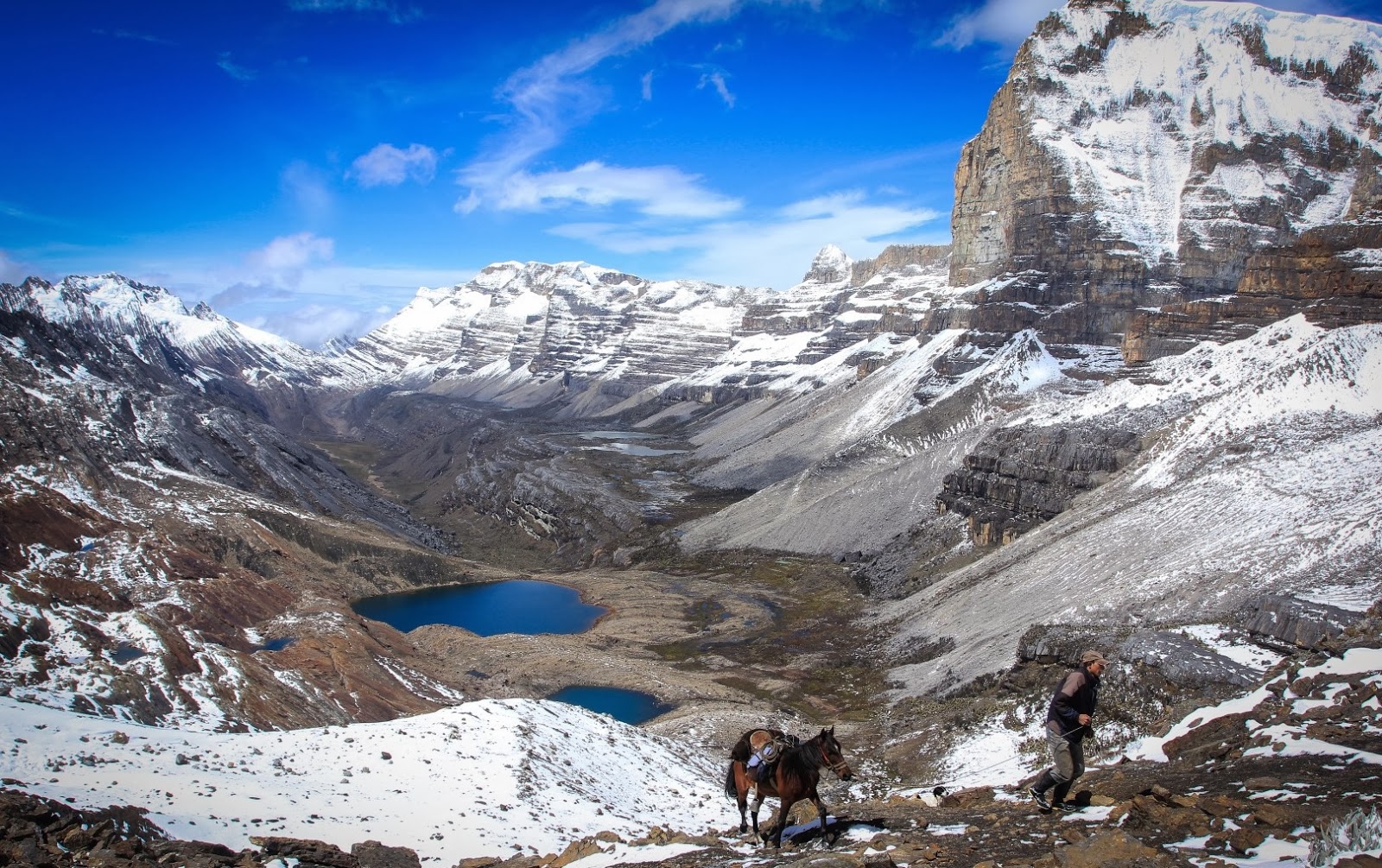I've said before, and I'll reiterate now--I love the American landscapes. Especially the American West. I can get all the hiking I'll ever need in the Rockies, the Sierras, the Cascades, the Great Basin, the Appalachians, etc. Heck, I can probably get all the hiking I ever need in Colorado alone (although frankly, I'm more inclined to look towards Wyoming and Montana for the Rockies, and Utah and Arizona for the Colorado Plateau experience.) I'm almost jingoistic about preferring the American West, with a nod towards the American east as a nice secondary location. But there is one major problem with this: the season is too short.
For mountains in the Rockies, the Sierras, or the Cascades, the season is (basically) July, August and September. On low snow years, you can incorporate June, especially if you stick to lower elevations. Because I don't do skiing--cross-country, Nordic, or otherwise, and I don't really like hiking in serious snow, my season is fairly short.
I can get desert hikes in on the "shoulder" seasons. The best time to go to Canyonlands or the Grand Canyon is actually the spring and the fall. The lower elevation mountains of the Appalachians, like the Smokies and the rest of the Blue Ridge, are arguably
better in October than any other time, whereas the more northerly parts of the Appalachians, and the higher elevation Rockies, Cascades and Sierras are extremely iffy in October, if they're available at all. But that only extends my hiking season to, oh, about seven months. Maybe eight if I'm really pushing it.
During the "dead" of winter, I have slim options in the US. There's some great hikes in Hawaii and American Samoa, for instance (although they're extremely hard to get to, relative to the Rockies). Big Bend National Park, I can attest, is lovely in February (and presumably much of the rest of the winter) if you don't mind extremely arid hiking. The same could be true of Guadalupe Mountains National Park, Organ Pipe Cactus National Monument, Saguaro National Park, and parts of Death Valley. But what I really want is mountains, and to get those in the "off season", you have to flip over, find yourself in the southern hemisphere where the seasons are reversed, and try it that way.
Oddly, there are a few less options than you'd maybe think by doing this, since the percentage of the earth covered by land in the southern hemisphere is dramatically less than in the northern hemisphere. But your best options probably include the Southern Alps in New Zealand (famous as the locations used in the
Lord of the Rings and
Hobbit movies) or portions of the Andes in South America. New Zealand has got to be the better of the two options, given that it is political much more stable than many of the countries of South America, and you don't have to learn another language to get by (as it happens, I already speak Spanish, and I learned it in Argentina, so I'm OK on that front.) I've been extremely impressed, however, with photography that I've seen from hikers in the Andes, particularly the Patagonian Andes. When I was in Argentina, the Bariloche region was often billed as a "little Switzerland" in terms of settlement patterns, architecture, chocolate, and... of course.. scenery. I hadn't yet heard of some of the stunning vistas of the even more southerly Patagonian Andes--Torres del Paine, or Monte Fitz Roy, or Cerro Castillo, for instance.
I'd love to fill my Jauuary and Feburary itineraries with backpacking trips into the Patagonian Andes, and then come home to fill my July and August (and September) itineraries with the Rockies, the Cascades and the Sierras. Heck, Argentina even has a reverse Colorado Plateau desert systems in Talampaya National Park and Ischigualasto Provincial Park to help round out my shoulder seasons. If I can find a way to do this, I can hike at any time of the year in a stunning wilderness setting.
Here's some images I've grabbed over time on the internet of Andes hiking opportunities:
Now; does anyone know how I can go about getting a corporate sponsor to keep me hiking for about four months of the year, and support me for the remaining eight while I plan and equip myself?
 I really like Cabela's, and for a variety of reasons, I'd rather shop there for my outdoor stuff than REI, or Dicks, or some other Joe Blow sporting goods store. However, Cabela's is very focused on hunting and fishing, and where I'm looking for technical backpacking and hiking gear, they haven't always been the best choice.
I really like Cabela's, and for a variety of reasons, I'd rather shop there for my outdoor stuff than REI, or Dicks, or some other Joe Blow sporting goods store. However, Cabela's is very focused on hunting and fishing, and where I'm looking for technical backpacking and hiking gear, they haven't always been the best choice.








